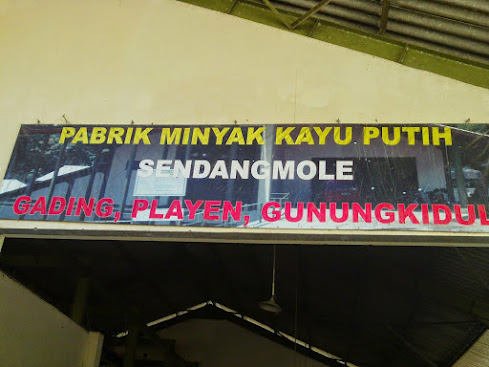Essential oil is one of Indonesia's mainstay commodities. There are many essential oils that can be produced in Indonesia because of the tropical climate so that there are so many plants that can grow well in Indonesia. There are around 40 essential oils that can be produced in Indonesia. Essential oils are produced by the leaves, flowers, bark and even atsiri plant roots. Essential oils also vary from grass plants, shrubs to woody trees. This makes these plants can be planted anywhere depending on the condition of the land, and the desired essential oil products. And these essential oil plants are only seasonal plants and annual plants. The use of essential oils is also very broad, namely for perfumes, food, insect controllers and pharmaceuticals. In addition, the market potential of essential oils is also still very open. Cajuput oil is an example of essential oils that are very widely used, but many may not know that cajuput oil includes essential oils. Though cajuput oil can be found in almost every house in Indonesia especially those who have babies or small children. Ten essential oil products produced in Indonesia can be read here.
When compared to palm oil, the production is reported to reach more than 40 million tons / year and occupies an area of 12 million hectares, the production of essential oil is much smaller, which is only 5000-6000 tons / year. It is estimated that every year there will be an increase in export of essential oils by 10%. As well as palm oil which can be further processed into various oleochemical products, as well as essential oils, further processing into fine chemicals is very possible. Added value will be large enough if the essential oil is processed into fine chemical or various derivative products. The ironic thing in the essential oil industry in Indonesia is that Indonesia exports crude essential oils, but imports more derivative essential oils, reaching even more than four times, especially perfume products and food flavoring. The condition of the trade deficit should be changed so that the import of downstream products can be reduced gradually and if possible until it does not need to be imported again. After the deficit can be overcome, it can then spur exports even not only crude essential oil but its essential oil derivative products. So it is brief that Indonesia should not only export raw materials, then import finished products even in greater quantities.
The vastness of land available in Indonesia and the size of the market need is an interesting opportunity in the era of bioeconomy in sight. The variety of essential oils and the producing plants also attracts opportunities. Atsiri plantations can be promoted to various regions in Indonesia. The large plantations will also be more attractive by being integrated with large farms. Fertilizer needs for these plantations can be fulfilled from these farms, as well as increasing national meat production which is currently still heavily imported. For more about large plantations and large farms, please read here. One way to be grateful for the blessings of Allah SWT is to make use of unprocessed lands and even barren so that they become productive.
The technology for extracting essential oils is also quite simple by distillation. The distillation equipment is also almost all domestic products so it is relatively cheap. In practice, there are still many refiners that are still simple so that energy consumption is wasteful and the essential oil quality is low due to the use of refining materials below the standard. A number of improvements can certainly be done to further improve the efficiency of essential oil production, for example using an efficient boiler. Biomass waste, which is the material that has been taken by its essential oil, can be used as a distillation fuel of essential oil itself.













No comments:
Post a Comment